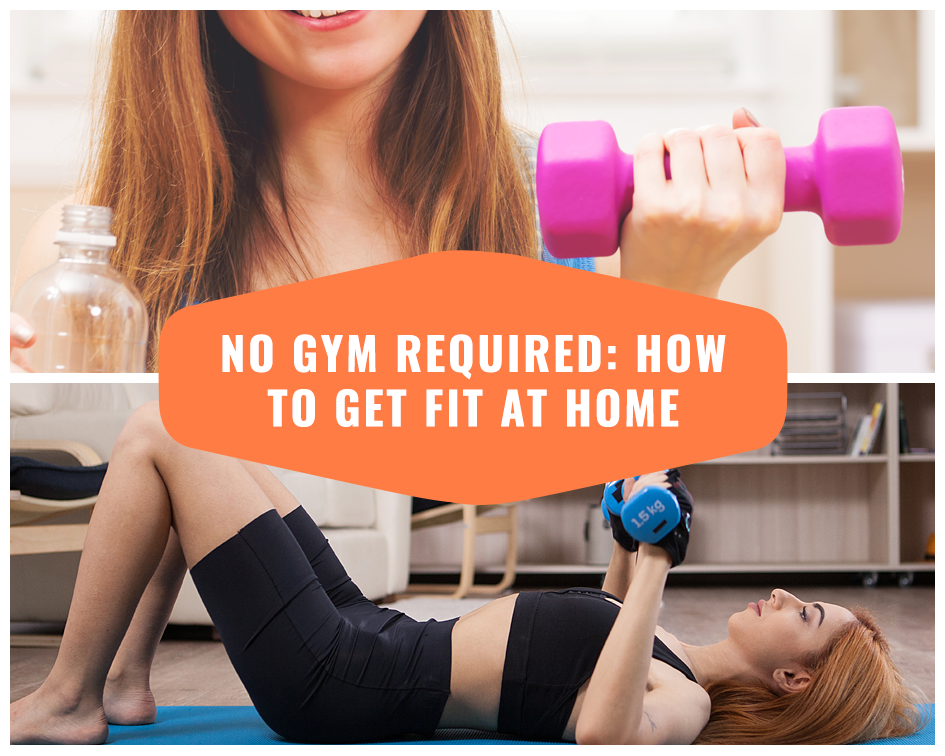Your Cart is Empty
shop

No Gym Required: How to Get Fit at Home
April 27, 2020 4 min read
No Gym Required: How to Get Fit at Home
It doesn't take much effort or money to design an effective workout program at home. Things like fit balls, dumbbells, exercise bands or tubing, and push-up bars are an inexpensive way to create a routine that works for all the major muscle groups.
But even with no props or machines, you can build muscles and burn calories.
If someone wants to get started, they could take a brisk walk, then do abdominal exercises and push-ups.
The 5 Elements of Fitness
An effective fitness program has five components, all of which you can do at home:
- A warmup.
- A cardiovascular (aerobic) workout.
- Resistance (strength-building) exercises.
- Flexibility moves.
- A cooldown
A warm-up could be an easy walk outside or on a treadmill, or a slow pace on a stationary bike. For the cardiovascular portion, walk or pedal faster, do step aerobics with a video, or jump rope -- whatever you enjoy that gets your heart rate up.
The resistance portion can be as simple as squats, push-ups, and abdominal crunches. Or you could work with small dumbbells, a weight bar, bands or tubing.
Increase your flexibility with floor stretches or yoga poses. And your cooldown should be similar to the warm-up, "cardiovascular work at a low level to bring the heart rate down to a resting state."
You can do strength work in the same workout as your aerobic work, or split them up. Just be sure to warm up and cool down every time you exercise.
If you're short on time one day, increase the intensity of your workout. Instead of your usual 45-minute ride on the stationary bike, choose a harder program for 25 minutes and really push yourself. Choose the hilly walk in your neighborhood, or jog instead of walking.
You can step up the pace of your strength workout by doing compound exercises -- those that work for more than one muscle group at a time.
For example, doing squats (with or without weights) works the quadriceps, hamstrings, gluteus, and calves. Push-ups involve the pectorals, deltoids, biceps, triceps -- even the abdominals and the upper back.
If you're not the create-your-own workout type, there are fitness videos galore -- offering everything from kickboxing to belly dancing to Pilates. You can find them at local bookstores and discount stores, or on the Web. Just be sure to choose one that's appropriate for your fitness level.
Getting Started
If you're a beginner, aim for 30 minutes of cardiovascular exercise at least three times a week, and 20 to 30 minutes of strength work three times a week. Be sure your strength workout covers all major muscle groups, in your upper body, lower body, abdominals, and back. Shoot for three sets of 10-15 repetitions of each strength exercise.
No matter what type of exercise you do, be sure to start slowly and gradually increase your workout time and intensity. And don't forget to listen to your body.
"Focus on the muscles that you think you should be working," See if you feel it there. If you're working your abs and you feel it in your neck, then it's not right. Close your eyes and start to tune in to your body.
It's also important to stay tuned in to what motivates you.
Working out at home has obvious advantages. But there are obstacles, too: distractions from the phone, the kids, the dog, the Internet, and the refrigerator can derail a workout. And that's if you can get started in the first place. When you're at home, it's easy to find something else that needs to be done.
A good way to stay motivated and avoid distractions is to exercise early in the day. Morning exercisers are more likely to stick with their workouts,
"Get (the workout) over with first thing in the morning, then get on with your day,"
Tips for home exercisers
The experts offer some other tips for home exercisers:
- Challenge yourself and avoid boredom. At home, you won't have a variety of equipment and classes that are available at a gym. So surf the Internet and browse fitness magazines to check out new workouts and make sure you're exercising correctly. "Pictures are everything. Use them as a guide for form and technique,"
- Find an exercise partner. You'll be less likely to find excuses when you've arranged to work out with a friend.
- Schedule your workouts. "Have a plan," Look at a planner and write out your exercise appointments one month in advance. If something comes up and you have to change one, reschedule it immediately.
- Use a journal to track your progress and jot down any breakthroughs you may have. When you have a bad day, write that down, too, to help you to find patterns you can break. For example, you may find an egg-white omelet gets you through your morning workout better than a bagel.
- Set goals, like training for a race or losing 20 pounds. "A goal should be something you can't do right now, but you know is within your reach," Give yourself mini-rewards along the way: a new fitness magazine, those workout tights you've been eyeing, or a new pair of sneakers.
- Perhaps most important, make exercise as integral to your life as sleeping and eating,
-
"You have to think of it as a lifestyle change. It doesn't end. Get out of the mind-frame that exercise is something you're only going to do for a period of time."
Sign up for our mailing list
STAY IN THE LOOP
Become a Sports Wholesale Supply Insider and we'll keep you up-to-date with the latest news.







